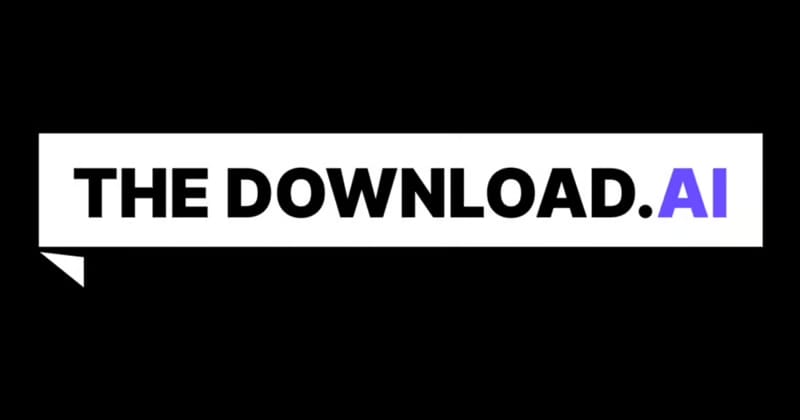- TheDownload.AI
- Posts
- 78th Edition Download
78th Edition Download
Lockheed Martin takes AI internal, Perplexity tries to buy Chrome, and Apple’s sweetening Siri for your home.

How To Become Recognized (With AI)
Today, I want to zoom in on something less flashy than the latest model drop, but just as important for your career: AI adoption happening inside small and mid-sized companies.
Here’s the truth:
Most of the AI headlines are about the giants: Google, Microsoft, OpenAI. But beneath the surface, smaller companies are steadily weaving AI into their workflows. It’s not always “build a custom model” level stuff, it’s replace clunky manual steps with AI tools, or let AI draft 80% of something before a human polishes it. Think: automating reports, summarizing customer interactions, pulling quick competitive research, or drafting proposals.
And here’s the big opportunity: in these companies, AI is only replacing parts of jobs.
Which means the most valuable employees are the ones who know how to use AI to make their own work faster, cleaner, and better.
If you’re looking for an entry-level role, the question hiring managers are quietly asking themselves isn’t just “Can this person do the job?” It’s “Can this person do the job and improve the way we do it?”
Here’s how you make yourself that person:
Learn the tools: You don’t need to master every AI app. Pick 1–2 relevant to your target industry (Notion AI, ChatGPT, Perplexity, or a CRM with AI baked in) and get comfortable with them.
Show the receipts: When you talk to employers, have examples ready of how you used AI to speed up a process, improve accuracy, or save time.
Be the bridge: Many small companies have leadership that knows they should use AI, but no idea how. If you can connect their pain points to AI solutions without the jargon, you’re ahead of 90% of applicants.
The reality is, you don’t have to be an AI engineer to benefit from the AI wave. You just have to know how to ride it before it crests.
— Aidan
This Week in AI:
No jargon, no filler—just the biggest AI developments worth knowing right now. Perfect for quick industry insights, so you can skip the buzzwords and get straight to the good stuff. Let’s dive into this week’s AI shake-ups, just as promised:
Lockheed Martin quietly revamped its internal AI infrastructure with IBM, streamlining its data and powering more mission-critical innovation. Perplexity made headlines with a staggering $34.5 billion bid to buy Chrome, an audacious strategy to jump the search engine line. And Apple? It’s finally readying a smart-home display that puts voice-first Siri at the center.
Let’s get into it.
In This Issue:
Lockheed Martin + IBM: AI Factory Turbocharged → Streamlining tools, boosting accuracy, and scaling AI securely. (link)
Perplexity Bids $34.5B for Chrome → A bold bid to anchor its AI ambitions in one of the world’s most-used platforms. (link)
Apple’s Voice-First Home Pivot → A smarter Siri-led smart display is likely coming next spring. (link)
TL;DR:
Lockheed Martin overhauled its AI stack in partnership with IBM, implementing Cloud Pak for Data to consolidate and integrate data systems, cutting tools in half and enabling smoother GenAI workflows. Their internal AI Factory now runs IBM’s Granite LLMs within a governed environment, using watsonx tools for explainability, agentic workflows, and orchestrated deployments.
Our Take:
For organizations with complex data siloes (or high-stakes decisions), Lockheed’s setup is a blueprint: unify your data fabric, layer in governance and observability, and give engineers autonomous, secure AI tools. If AI agency wins strategy points, Lockheed just scored big.
TL;DR:
Perplexity, AI search startup recently valued at ~$18B, just offered $34.5B for Google Chrome. The offer pledges to keep Chromium open-source, invest $3B into its development, and preserve user defaults (Chrome’s users would still default to Google search). It’s a bold gambit to secure access to Chrome’s 3+ billion users and potentially leapfrog deeper into the search and AI ecosystem.
Our Take:
If Perplexity can pull off a deal (even if it's years down the line), it reshapes who controls the browser as the portal to AI. Even if Google keeps Chrome, the move shines a light on the growing value of AI-native interfaces. For anyone building products, know this: the fight for digital pipelines starts with the browser, and AI is redefining it.

TL;DR:
Bloomberg reports Apple plans to launch a smart home display next spring featuring a redesigned, voice-first Siri. The interface aims to let users control apps, edit and send specific photos, and navigate complex tasks with natural language alone, no tapping required. It’s part of Apple’s push to make Siri useful and conversational enough to compete with Google and Amazon in smart home.
Our Take:
Apple is betting quiet perfection over flashy reveal. Voice-first, AI-enhanced workflows are table stakes in 2025, and Apple’s slow-and-steady approach could actually win. If you build consumer AI, consider the power of frictionless interfaces tied to ecosystem data. Apple’s version of that might arrive on your nightstand next year.
🚀 Thank you for reading The Download
Your trusted source for the latest AI developments to keep you in the loop, but never overwhelmed. 🙂
*For sponsorship opportunities, email [email protected]


Reply